The main domestic developments in the field of autonomous unmanned underwater vehicles
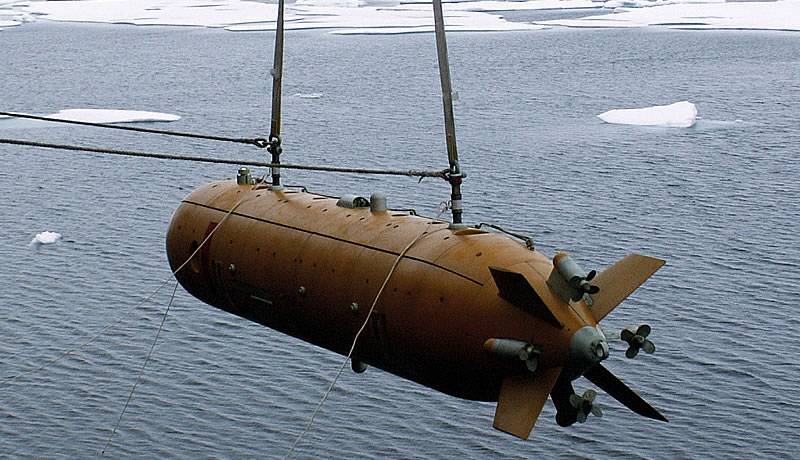
AUV "Harpsichord-1R" on trials. Photo by IPMT FEB RAS
In recent decades, the Russian military department and the defense industry have been actively engaged in the direction of autonomous unmanned underwater vehicles (AUVs). Products of this class can have different dimensions, characteristics and capabilities that ensure the solution of combat and auxiliary tasks, and therefore are of great interest to fleet... A number of modern AUVs have already been put into service, and now such equipment is used in real operations. In addition, a number of other designs are expected to be adopted.
Deep sea direction
The heavy "Harpsichord-1R" is considered the first modern AUV brought to real operation. This product was developed by the Institute of Marine Technology Problems of the Far Eastern Branch of the Russian Academy of Sciences (IPMT FEB RAS) at the beginning of the 2005s. In 2006-2007. in the Far East, sea trials of experimental equipment were carried out, and in XNUMX, trial operation was carried out in the Arctic.
At the end of the decade, a new AUV was adopted to supply the Navy; several devices and related products were handed over to the customer. It was also reported that the manufacturer is ready to build new devices for other customers. Since the end of the 1s, the "Harpsichord-XNUMXR" devices have been regularly used in various search and research operations.
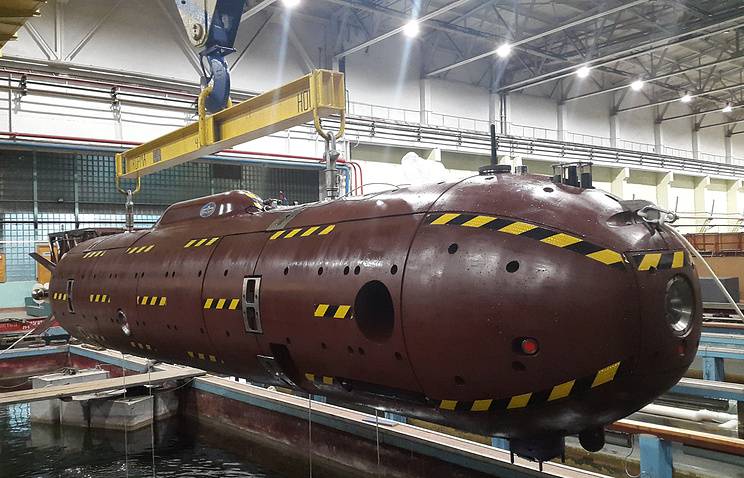
Later "Harpsichord-2R-PM". Photo CDB "Rubin"
AUV "Harpsichord-1R" is made in a cylindrical body 5,8 m long with a diameter of 0,9 m. Gross weight - 2,5 tons. The device develops a speed of approx. 3 knots and can operate at depths of up to 6 km. A variety of scientific equipment is installed on board, corresponding to the task at hand. First of all, these are video cameras and sonar stations.
In the first half of the tenth years, the Rubin Central Design Bureau developed a new AUV "Harpsichord-2R-PM". In the middle of the decade, the production of a prototype was completed, which then went out for testing. According to various sources, these measures are still ongoing, and the device has not yet been adopted for service.
According to open sources, the product "Harpsichord-2R-PM" is larger and heavier than the device of the previous model, and also has other running characteristics. Various scientific instruments can be installed on it. This technique is designed to work with a carrier submarine. It will be the nuclear submarine "Belgorod", rebuilt according to the special project 09852.
In 2018, construction began on the promising Vityaz-D AUV, developed at the Rubin Central Design Bureau. It was reported that this is a research apparatus capable of working in the deepest parts of the oceans. In 2019, the product was taken out for testing, and in May 2020 it sank to the bottom of the Mariana Trench and recorded a depth of more than 10 km.
"Vityaz-D" has a length of 5,5 m with a diameter of no more than 1,5 m. The device is designed for immersion to a depth of 12 km. There is an electric power plant with 4 cruising and 10 thrusters. Autonomy reaches 1 day. On board "Vityaz-D" there are video cameras and measuring instruments. According to various sources, it is possible to install additional equipment for scientific or other purposes.
Middle class
In the early tenths, another AUV project called MT-2012 "Galtel" was created at the IPMT FEB RAS. Tests of experimental equipment of this type began in 2012 in the Far East. A few years later, the experimental complexes were transferred to the Pacific Fleet for development. Apparently, in the future, such a technique appeared at the disposal of other fleets. From 2017-18 Galtel products are used at the Tartus base in Syria to survey the water area and the bottom in order to search for potentially dangerous objects.
The Galtel complex includes several autonomous vehicles and controls. It can also be supplemented with remotely controlled underwater vehicles of a suitable type. The "Galtel" itself is more than 2 m long and weighs 180 kg. The electrical power plant allows you to move at a speed of 4,3 knots; power reserve - 100 km. Work is provided at depths of up to 400 m.
The AUV carries a side-scan sonar, video cameras and sonar navigation aids. There are several operating modes with different features. In particular, "Galtel" is able to detect suspicious objects in the surveyed area. After detection, the device pops up and transmits to the operator a photo and video of the object. With another underwater Robot the operator can carefully examine the found item and take action.
The tasks of surveying the water areas can also be performed by the AUV "Sea Shadow" or "Glider", developed by the St. Petersburg State Marine Technical University (SPbGMTU) and the "Oceanos" enterprise. Work on this topic began in 2012, and in 2016 an experimental device entered the test. In the future, the first version of the "Glider" was fine-tuned, as well as the development of new modifications and improved projects. Some of these products interested the Navy and passed the appropriate tests.
The "Sea Shadow" is a 3 m long apparatus with "wings", due to which movement is provided. The mass of the product is 150 kg, of which 15-17 kg is used for the payload. Instead of a traditional propeller propulsion system, a buoyancy change system is used. With its help, the AUV maneuvers in depth, while the “wings” provide forward motion. This method of movement allows you to accelerate only up to 1,5-2 knots, but provides high efficiency. The autonomy of the "Sea Shadow" exceeds 6 months.
Combat samples
For a number of reasons, the modern project "Poseidon" received the greatest popularity among the military AUVs. The existence of such a development became known back in November 2015, but the official announcement took place only in March 2018. Since then, it has been repeatedly reported that various tests have been carried out, but the product has not yet been accepted into service.
Poseidon is an underwater vehicle up to 20 m long with a displacement of approx. 100 tons. A nuclear power plant is used, which gives practically unlimited autonomy and cruising range. On board the AUV there must be various systems of navigation, control, etc., ensuring independent navigation and solving combat missions. It is planned to install a nuclear warhead of unknown power.
It is known that the Poseidons will be used with carrier submarines. In this capacity, several nuclear submarines are being considered, rebuilt according to special projects. Most likely, the carrier will deliver the underwater vehicle to the specified area, after which it will be able to independently patrol or go to the designated target.
In 2015, it became known about the development in the Central Design Bureau "Rubin" of the project of a combat AUV under the code "Cephalopod". It was reported that the goal of this project is to create a heavy vehicle capable of carrying torpedo weapons. Such products should patrol water areas and detect enemy submarines - with their subsequent defeat if ordered.
The current status of the Cephalopod project is unknown. At the official level, it has not been mentioned for a long time, which can be interpreted in a variety of ways. Perhaps the project was abandoned for one reason or another, or its final study is being carried out in compliance with all the necessary secrecy.
On its own initiative, the Rubin Central Design Bureau has developed the Surrogate underwater vehicle. It is a modular, electrically powered platform for use in training exercises. By installing the appropriate modules, the "Surrogate" will be able to create physical fields with the required parameters and simulate the submarines of a potential enemy.
The "Surrogate" complex has the greatest prospects, but its future remains unclear. The Ministry of Defense has not yet announced its opinion on this development and has not said that there are plans to accept such funds for supply.
In the interests of the fleet
Currently, a number of domestic organizations are engaged in the development of autonomous unmanned underwater vehicles for various purposes. They have already presented more than a dozen different projects, some of which were created by order of the Navy or are offered to it. In addition, several enterprises organize the localization of foreign samples. As a result, over the past 12-15 years, it was possible, at least at the level of proposals, to close all the main niches in the AUV field, and some of the samples have been successfully brought to acceptance for supply and operation.
Work on the creation of new projects continues and is already yielding the desired results. Other projects are being carried out with an eye to the distant future, and their progress is conducive to optimism. In this case, we are talking about both the technique of already known classes and fundamentally new designs. Thus, the development of a new promising direction continues and already has a noticeable impact on the development of the Navy. And in the future, thanks to new designs, this influence will grow significantly.
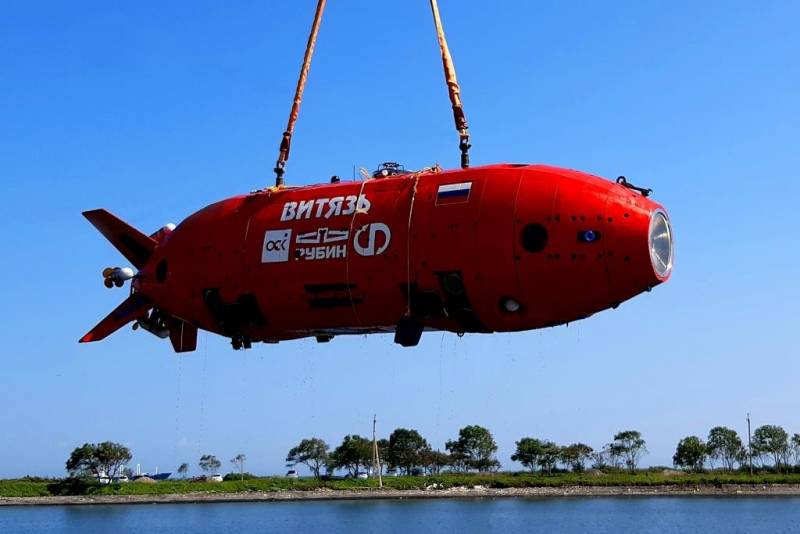
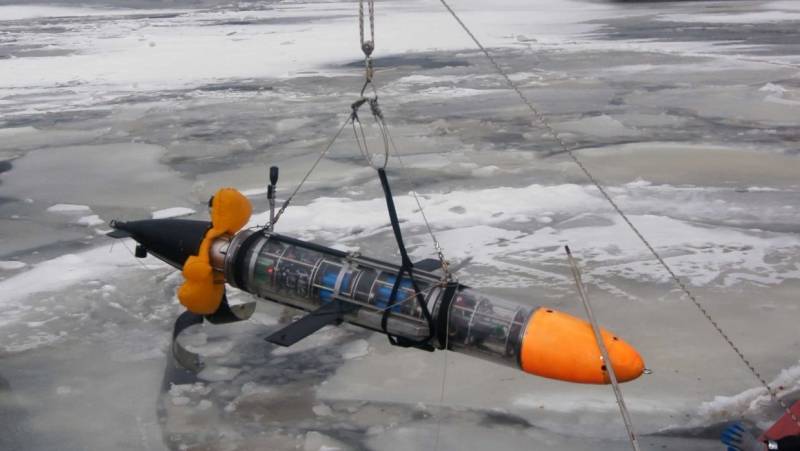
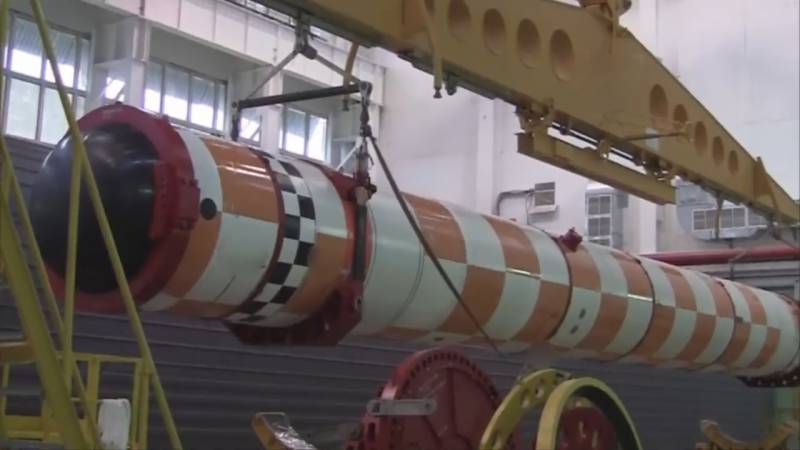
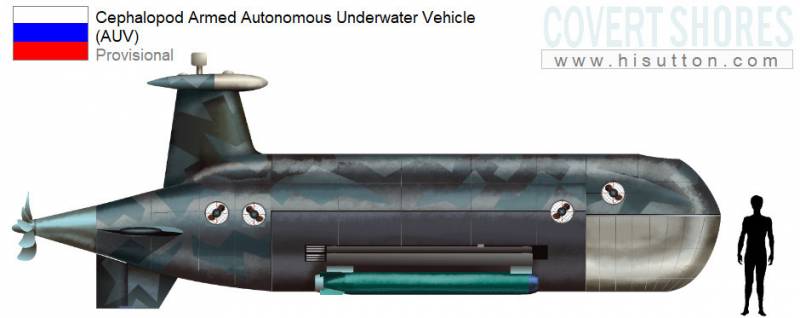
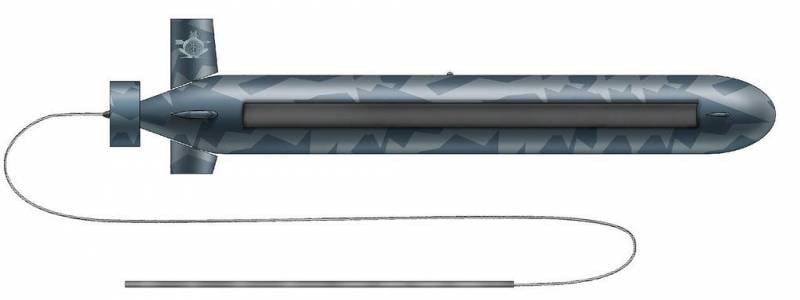
Information